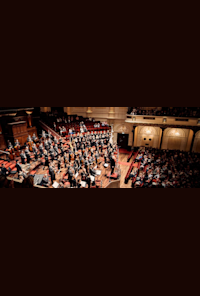In October 2022, the Monteverdi Choir and John Eliot Gardiner joined the Concertgebouw Orchestra and the Luxembourg Philharmonic Orchestra for a programme of choral works by Brahms. The Concertgebouw Orchestra also performed Brahms’ Symphony No. 3 and the Luxembourg Philharmonic Orchestra performed Dvorák’s Symphony No. 5.
Brahms: Choral Works
Nänie, op. 82
Ich schwing mein Horn, op. 41 nr. 1
Fünf Gesänge, op. 104
Vier Gesänge, op. 17
Gesang der Parzen, op. 89
Es tönt ein voller Harfenklang
Nachtwache 1
Einförmig ist der Liebe Gram
Robert Schumann urged the 20-year-old Johannes Brahms to direct his magic wand ‘where the power of the masses in chorus and orchestra may lend him strength’. John Eliot Gardiner’s approach to Brahms’s symphonies, placing them alongside the composer’s earlier choral works, casts fresh light on the works and reminds us of the intrinsic vocality of his writing for orchestra.
The opening of Nänie has been described as the most radiant music Brahms ever wrote: a tender oboe melody ushers in the graceful canonic entries of the voices to the words ‘Behold, the gods weep, all the goddesses weep / that beauty fades, that perfection dies’. The piece is a setting of a poem by Friedrich Schiller, referring to characters from Greek mythology: Orpheus mourning his lost Eurydice; Aphrodite, whose lover Adonis was killed while hunting; and Thetis, who failed to save her son Achilles from death. Brahms wrote it in response to the death of his friend, the painter Anselm Feuerbach.
Gesang der Parzen (Song of the Fates) sets a ballad by Goethe, with music of the most advanced harmony alongside unmistakeable allusions to the earlier German composers Brahms admired, such as Bach.
The programme also includes unaccompanied works for choir and the magical Vier Gesänge, Op.17, for women’s voices, two horns and harp.







